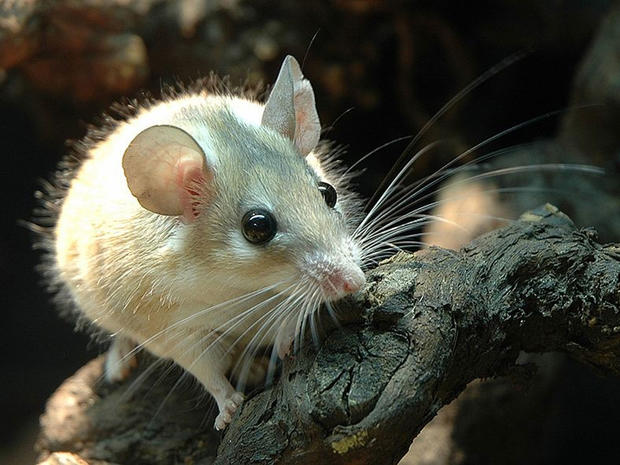African spiny mouse may hold key to scar-free skin regeneration
(CBS News) An African mouse with skin regeneration properties may hold the key to scar-free procedures for humans.
The African spiny mouse is known for its ability to allow its skin to rip off its tail when being grabbed by predators because it can regenerate the missing bits. But, what scientists discovered was this ability extended to the entire mouse's body and that the skin could look exactly as it did before, right down to regrowing the exact hair color at the site of the injury.
"These guys had been known to lose their tail, but no one had ever reported on skin dislodging from their body," study author Dr. Ashley W. Seifert, a postdoctoral fellow at the University of Florida, said to Discovery News.
Regeneration typically happens in amphibians, but the fact that this mouse is a mammal means that there can be future applications for people. And, unlike amphibians which "break" their body parts at certain points that allow for regeneration, the mouse's skin is all one piece just like a humans. It can tear at any point and be replaced.
"This study shows that mammals as a group may in fact have higher regenerative abilities then they are given credit for," Seifert said to the BBC.
The secret to the mice's success is their extremely thin skin. The skin has a higher number of hair follicles, which makes it less connected and easier to tear. Compared to a regular house mouse's skin, it takes 77 percent less energy to create a lesion on the African spiny mouse. Moreover, they can lose up to 60 percent of the skin on their back if necessary to get away from a predator.
What also makes the spiny mouse so special is its healing factor. It only takes three days to cover a wound over with new skin, and their wounds stop bleeding and scab relatively quickly. A wound can shrink up to 64 percent in one day.
However, instead of using a substance to cover their wounds called collagen I, which creates scars, the spiny mouse uses collagen III, which can create new, normal tissue. This process, called re-epithelialization, allows the mouse to completely replace lost skin cells.
To further test the effect of re-epithelialization, the researchers punched holes in the mice's ears. Normally, when humans or other mice have their ears pierced, it leads to scarring and a semi-permanent hole. But, for the spiny mice, they formed a bundle of stem cells called a blastema that could replace what was missing. The holes completely closed, and the wound was replaced new cartilage, skin, hair and other tissues.
Scientists want to further examine the mice's regenerative properties as well as any immune system benefits they may have that can help prevent infection.
"These studies suggest that the pathways leading to regeneration, at least of the skin, that are normally associated with amphibians are also accessible in mammals." Elly Tanaka, professor of Animal Models of Regeneration at the DFG Research Center for Regenerative Therapies in the Technical University of Dresden, said in her commentary of the study.
The results were published online in Nature on Sept. 26.

